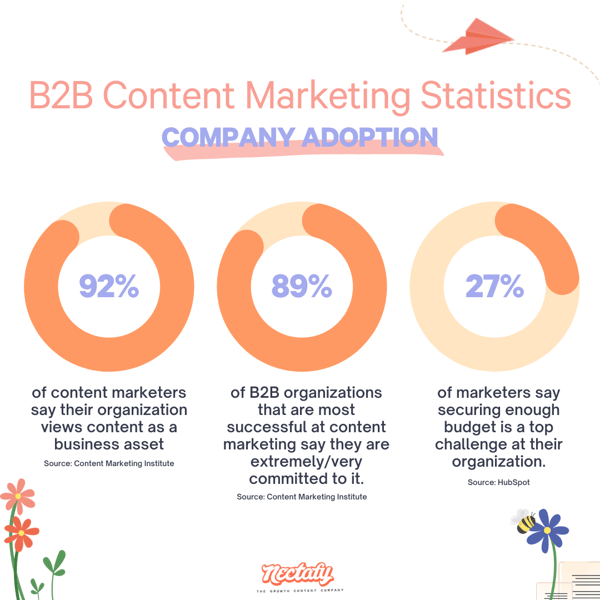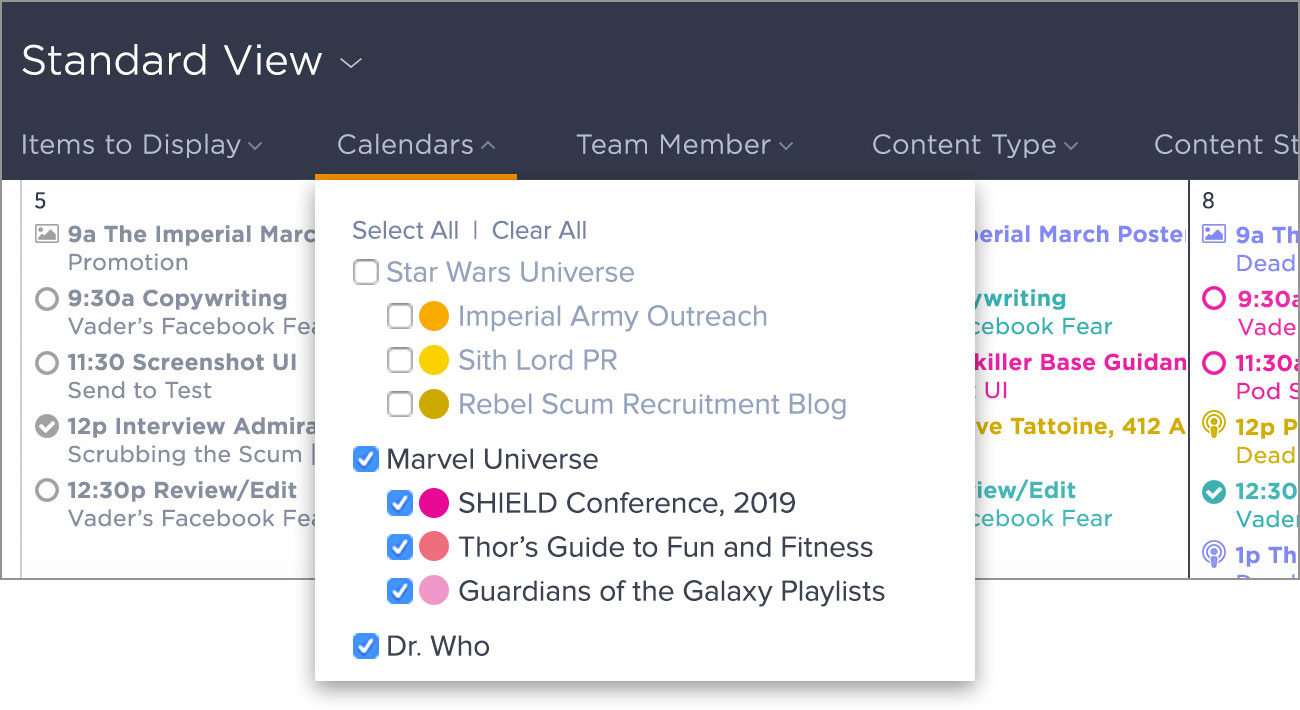The saying “content is king” has never rung truer. Yet, for many marketers, managing the sprawling kingdom of content creation, distribution, and analysis can feel overwhelming.
Content operations come to the rescue by orchestrating the myriad tasks and teams involved, transforming chaos into a well-oiled machine. When executed effectively, content operations not only streamline processes, but also enhance collaboration, boost efficiency, and drive better results.
In this article, we’ll explore how you can make content operations work for you, providing actionable insights and practical tips to unlock the full potential of your content marketing efforts.
Understanding Content Operations
Content operations refer to the strategic framework that encompasses the processes, people, and technology needed to manage and optimize the entire lifecycle of content. From planning and creation to distribution and analysis, content operations ensure that every piece of content serves its purpose effectively and efficiently.
In 2024, content marketing remains a cornerstone of digital strategy, with 89% of the most successful content marketers being extremely committed to their strategy.
This statistic underscores the critical importance of a well-structured content operations framework to drive measurable outcomes.
Key Components of Content Operations
-
Content Strategy: Developing a clear content strategy that aligns with business goals and audience needs.
-
Content Creation: Managing the production of high-quality content that engages and informs your target audience.
-
Content Management: Utilizing tools and platforms to store, organize, and retrieve content efficiently.
-
Content Distribution: Strategically distributing content across various channels to maximize reach and impact.
-
Content Governance: Establishing policies and guidelines to ensure content consistency, compliance, and quality.
Benefits of a Robust Content Operations Framework
-
Streamlined Processes: By clearly defining workflows and responsibilities, content operations reduce bottlenecks and improve efficiency. Research indicates that content marketers spend about four hours each day on administrative and operational tasks. Streamlining these processes can significantly boost productivity.
-
Enhanced Collaboration: Effective content operations foster better communication and collaboration among team members, leading to more cohesive and effective content strategies.
-
Improved ROI: With the right metrics and tools in place, organizations can track the performance of their content and make data-driven decisions to optimize their strategies. This approach is crucial, as 68% of businesses report a higher ROI on content marketing and SEO thanks to AI integration.
By understanding and implementing a comprehensive content operations framework, organizations can unlock the full potential of their content marketing efforts, driving better engagement, higher conversion rates, and ultimately, greater business success.
Optimizing Your Content Marketing Team’s Operations
Optimizing your content marketing team’s operations is essential for maximizing efficiency, enhancing collaboration, and achieving better results. Here are several strategies to help streamline your team’s processes and ensure smooth content production and distribution.
Streamlining Processes
Clear and well-defined workflows are crucial for reducing bottlenecks and improving productivity. Here’s how to create efficient workflows:
-
Document Your Processes: Start by mapping out each step of your content creation process, from ideation to publication. Documenting these steps helps identify potential inefficiencies and areas for improvement.
-
Assign Clear Roles and Responsibilities: Ensure every team member knows their specific tasks and deadlines. This clarity prevents overlaps and ensures accountability.
-
Use Editorial Calendars: An editorial calendar helps plan and track content production, ensuring that everyone is on the same page and deadlines are met. Tools like DivvyHQ’s template package are invaluable in organizing and managing your content calendar effectively.
Enhancing Collaboration
Effective collaboration is key to a successful content marketing operation. Here are some tips to foster better communication and teamwork:
-
Implement Collaboration Tools: Utilize tools that facilitate communication and collaboration among team members. Platforms like Slack, Trello, and DivvyHQ provide features that enable real-time communication, file sharing, and task management.
-
Hold Regular Meetings: Schedule regular check-ins and brainstorming sessions to keep the team aligned and encourage the exchange of ideas.
-
Create a Collaborative Culture: Foster a culture where team members feel comfortable sharing feedback and ideas. Encouraging open communication helps in generating creative solutions and improving content quality.
Leveraging the Right Technology
Technology plays a vital role in optimizing content operations. Here’s how to make the most of the available tools:
-
Choose the Right Tools: Select tools that cater to your team’s specific needs, whether it’s project management, content creation, or analytics. The right tools can significantly enhance efficiency and output quality.
-
Integrate Tools Seamlessly: Ensure that all the tools you use are well-integrated, providing a seamless workflow. For instance, integrating your content management system (CMS) with your editorial calendar and analytics tools can streamline operations and provide valuable insights.
-
Utilize AI for Content Creation and Governance: Leveraging AI tools like Writer can enhance content creation and governance. Writer helps automate repetitive tasks, maintain brand voice consistency, and improve content quality.
By implementing these strategies, you can optimize your content marketing team’s operations, ensuring that your content is produced efficiently, meets high-quality standards, and reaches your target audience effectively.
The Smart Marketer’s Guide to Improving Content Operations
Improving your content operations involves a combination of strategic planning, continuous improvement, and the use of advanced tools and technologies. Here’s a comprehensive guide to help you elevate your content operations.
Simplifying Content Creation
Creating high-quality content efficiently is at the heart of effective content operations. Here are strategies to simplify the content creation process:
-
Editorial Calendars: Utilizing editorial calendars helps you plan and organize your content creation efforts. It ensures that your team is on track with deadlines and that content production aligns with your marketing strategy.
-
Standardized Templates: Develop standardized templates for different types of content to streamline the creation process. This ensures consistency and saves time.
Optimizing Content Distribution
Effective content distribution is crucial to ensure your content reaches the right audience at the right time. Here are some best practices:
-
Multichannel Approach: Distribute your content across multiple channels to maximize reach. This includes social media platforms, email newsletters, and your website. According to Forbes, 72% of B2B marketers have increased their use of LinkedIn over the last year.
-
Performance Tracking: Use analytics tools to track the performance of your distributed content. This data can help you understand what works best for your audience and adjust your strategy accordingly.
Strategic Planning
Strategic planning is essential for aligning your content operations with business goals. Here’s how to develop a robust content operations strategy:
-
Set Clear Objectives: Define what you want to achieve with your content marketing efforts. Whether it’s increasing brand awareness, generating leads, or driving sales, having clear objectives will guide your content strategy.
-
Audience Analysis: Understand your audience’s needs and preferences. Conducting audience research helps create content that resonates with them, ultimately driving better engagement and results.
Continuous Improvement
Continuous evaluation and improvement are key to successful content operations. Here are steps to ensure ongoing optimization:
-
Regular Audits: Conduct regular content audits to assess the performance of your existing content. Identify what’s working and what’s not, and use these insights to refine your content strategy.
-
Feedback Loops: Establish feedback loops within your team and with your audience. This helps in identifying areas for improvement and making necessary adjustments in real-time.
-
KPIs and Metrics: Define key performance indicators (KPIs) and metrics to measure the success of your content operations. Common metrics include website traffic, engagement rates, lead generation, and conversion rates.
By following this guide, you can improve your content operations, making them more efficient, strategic, and aligned with your business goals. Utilizing advanced tools, strategic planning, and continuous improvement practices will ensure that your content operations are optimized for success.
Enhance Your Content Strategy Today with DivvyHQ
Content operations transform the overwhelming task of managing content creation, distribution, and analysis into a streamlined, efficient process. By implementing effective content operations, marketers can enhance collaboration, boost productivity, and achieve better results.
DivvyHQ facilitates content operations by offering robust tools for planning, organizing, and managing workflows. Its editorial calendar and content management features help teams meet deadlines and collaborate seamlessly. Additionally, DivvyHQ’s integrated templates and automation capabilities simplify content creation, ensuring consistency and efficiency throughout the entire content lifecycle.
When you need a streamlined content operations solution, DivvyHQ has you covered. Request a demo now to see how DivvyHQ can transform your content strategy and drive better results.




